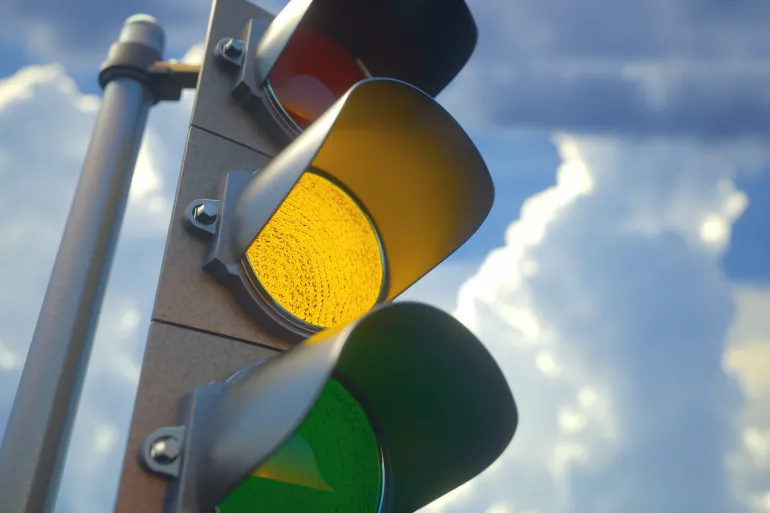Traffic and Road Safety

Intersections are some of the most dangerous points on any road, as they are where multiple streams of traffic converge. Managing these intersections effectively is critical to preventing accidents and ensuring smooth traffic flow. In Malaysia, traffic lights play a crucial role in regulating the movement of vehicles and pedestrians at intersections, reducing the risk of collisions and improving overall road safety.
Traffic lights are essential for controlling vehicle and pedestrian traffic at intersections, especially in busy urban areas where traffic volumes are high. Well-timed traffic lights improve safety by helping reduce the number of collisions through regulating the flow of vehicles and ensuring that drivers know when to stop and go. Additionally, properly timed traffic lights prevent traffic jams by ensuring an organized flow of traffic through intersections. They also enhance pedestrian safety by providing designated crossing times for pedestrians, which reduces the risk of accidents at intersections.
Without traffic lights, intersections are prone to several hazards. Collisions are common at uncontrolled intersections, often leading to side-impact accidents, where vehicles from different directions crash into one another. Furthermore, pedestrians face a higher risk of being hit while crossing the road without traffic lights to manage vehicle movement. Additionally, the lack of clear signals can lead to driver confusion, making it difficult for drivers to know when to proceed, which can result in accidents or congestion as vehicles try to navigate the intersection.
In Malaysia, traffic lights are a common feature at major intersections in urban areas such as Kuala Lumpur, Penang, and Johor Bahru. These systems are crucial for managing the high volumes of traffic seen in cities, particularly during peak hours. However, in rural areas, intersections are often less regulated, which can lead to higher accident rates. To improve the effectiveness of traffic lights at intersections, local authorities are increasingly adopting smart traffic light systems. These systems use sensors to monitor traffic flow and adjust the timing of the lights accordingly, ensuring smoother traffic management and reducing unnecessary wait times during off-peak hours.
Different types of traffic lights are used to optimize intersection management. Fixed-time traffic lights operate on a set cycle, with each direction receiving a green light for a predetermined amount of time. While effective in low-traffic areas, fixed-time systems can lead to inefficiencies in high-traffic zones. In contrast, traffic-actuated lights use sensors to detect the presence of vehicles and adjust the light cycles based on traffic conditions, making them particularly useful in areas with variable traffic patterns. Pedestrian-activated signals allow pedestrians to activate a crossing light, ensuring they have a safe period to cross the road. This system is commonly found near schools, shopping areas, and residential zones.
Even with traffic lights, managing intersections effectively requires addressing several challenges. Traffic congestion during peak hours can lead to bottlenecks, resulting in delays. Smart traffic light systems that adjust based on real-time traffic conditions can help alleviate this issue. Additionally, some drivers may attempt to run red lights, increasing the risk of collisions; enforcement measures, such as traffic cameras, can help deter this behavior. Moreover, in busy areas, pedestrians may ignore traffic signals, putting themselves at risk, which emphasizes the need for raising awareness and implementing clear signage to encourage safer behavior.
To address these challenges, Malaysia is increasingly investing in smart traffic light systems that use real-time data to adjust the timing of lights based on traffic flow, which helps reduce congestion and improve efficiency. Furthermore, adaptive traffic control systems can prioritize public transportation, such as buses, by extending green lights when they approach intersections, thereby improving overall transportation efficiency. Integrating traffic lights with pedestrian countdown timers has also proven effective in enhancing pedestrian safety by providing clear information on how long they have to cross the street, thus reducing the risk of pedestrians rushing through an intersection at the last moment.
Maintaining traffic lights is critical to ensuring their effectiveness. Regular checks are necessary to confirm that all signals are functioning correctly, and road markings at intersections need to be repainted regularly to remain visible to drivers. Poor maintenance can lead to malfunctions, causing confusion and increasing the risk of accidents at intersections.
In conclusion, traffic lights at intersections are an essential tool for managing road safety and reducing accidents in Malaysia. By controlling the flow of vehicles and pedestrians, traffic lights minimize the risks associated with high-traffic intersections, making roads safer for everyone. The adoption of smart traffic management systems and the regular maintenance of these systems will be key in ensuring that Malaysia's intersections remain safe and efficient, even as traffic volumes continue to grow. With tools like RAMS, authorities can monitor accident-prone intersections and make data-driven decisions to improve traffic light systems across the country.

